摘 要
自动数控磨床是钢材板材轧制生产线的重要配套设备,其磨削精度和磨削效率直接影响钢板的轧制质量与生产效率。它的作用是进行各种性质不同的钢材板材磨削,主要应用于钢材、铝箔和造纸行业等。然而其在磨削工作辊的过程中,两端的轴承箱体会与砂轮架发生干涉,而频繁的装卸轴承箱体则会使加工过程变得繁琐,因此设计了翻箱机构,将工件翻转90度。设计翻箱机构,包括翻箱机构的工作原理、机床各部件的组成、其操作要求和方法以及翻箱机构技术要求进行了概述,并详细设计了MKZ84125轧辊磨床的翻箱机构,其中包括法案的选择,电机的确定以及蜗轮蜗杆与各个轴以及齿轮的选择并画出了机床总装图,翻箱机构总装配图以及部分重要零件的部件图。其设计过程主要特点是采用三相异步电动机带动蜗轮蜗杆以及齿轮传动,以达到将工件翻转90度的效果,方便磨床加工。翻箱机构结构简单紧凑,操作简单,维护方便,翻转工件效率高。
关键词:翻箱机构;三相异步电动机;蜗轮蜗杆;齿轮传动
Abstract
The automatic CNC grinding machine is an important corollary equipment which rolls production line by steel and sheet metals. Its grinding accuracy and efficiency directly affect the quality of steel rolling and its production efficiency. Its role is to grind the various properties of steel and sheet metals, it mainly used in steel, aluminum foil, paper industry and etc. However, during the process of grinding, the bearing boxes of both sides will interfere with the wheel frame, and loading and unloading the bearing boxes frequently will make the process more complicated, so I designed the box turnover mechanism, it can let the workpiece rotate 90 degrees. Designing the box turnover mechanism, it consists of its working principle, the composition of each part of machine tool, its operating requirements and methods and providing an overview of technical requirements of the box turnover mechanism. What’s more, I also designed the box turnover mechanism of MKZ84125 rolling grinder. It involves the choice of the Act, the determination of motors and the selection of worms, each shaft and gears. In addition, I draw the assembly chart of machine, the general assembly chart of the box turnover mechanism and the parts diagram of some important parts. The main features of designing process are adopting the three-phase asynchronous motor to drive the worms and using the two-stage gears to drive to reach the effect which let the workpiece rotate 90 degrees. It will convenient the process. The structure of the box turnover mechanism is simple and compact. It can operate simply, maintain easily and the workpiece is efficient.
Key words: box turnover mechanism; three-phase asynchronous motor; worms; stage gears
目 录
摘 要III
ABSTRACTIV
目 录V
1 绪论1
1.1 立题依据1
1.2 翻箱机构的研究现状1
2 MKZ84125机床总体设计4
2.1 机床的技术参数4
2.2 机床总体布局设计4
2.2.1 布局方案的选择4
2.2.2 各部件的布局5
2.3 机床各部件的方案介绍5
2.3.1 床身5
2.3.2 头架6
2.3.3 尾架6
2.3.4 砂轮主轴系统7
2.3.5 砂轮架7
2.3.6 供油系统7
2.3.7 中心架8
2.3.8 CNC测量系统8
3 轴承箱体翻转机构设计9
3.1 设计的基本参数9
3.2 翻箱方案的选择9
3.3 翻箱机构的总体设计9
3.4 电动机的选择10
3.4.1 选择电动机类型10
3.4.2 选择电动机的容量10
3.4.3 电动机转速的确定11
3.5 总传动比和分配各级传动比的计算12
3.6 传动装置的运动和动力参数的计算12
3.6.1 各轴转速12
3.6.2 各轴功率12
3.6.3 各轴转矩12
3.7 传动零件的设计计算13
3.7.1 联轴器的类型的选择13
3.7.2 蜗杆传动的设计13
3.7.3 第一级齿轮传动的设计16
3.7.4 第二级齿轮传动的设计19
3.8 翻箱机构的结构设计21
3.8.1 轴1的结构设计21
3.8.2 轴2的结构设计22
3.8.3 轴3的结构设计23
3.8.4 翻箱机构其余部分的结构设计24
4 轴的校核26
4.1 轴1的校核26
4.2 轴2的校核28
4.3 轴3的校核30
5 结论与展望33
5.1 结论33
5.2 不足之处及未来展望33
致谢34
参考文献35
1 绪论
1.1 立题依据
该课题来自于无锡上机磨床有限公司的生产实际。
MKZ84125轧辊磨床它的磨削机理具有一般大型外圆磨床特点,但又不同于一般的外圆磨床的运动复杂得多,除砂轮与工件辊作相对回转运动外,还要求砂轮、工件二者作相对纵向运动的同时,作一定的径向相对位移,而且这个径向位移是不同于磨削锥度的复合运动。因此,它的传动机构比较复杂,机床工作精度要求也较高。工作辊是在造纸厂和轧钢厂的生产中用来轧制纸张和钢板的重要部件。其工作情况如图1.1所示。
图1.1 轧辊磨床工作辊工作示意图
由于工作辊在使用过程中磨损较快,平均两到三个小时就要进行修整磨削,否则将达不到所要求的加工精度。自动数控轧辊磨床在磨削工作辊的过程中,两端的轴承箱体会与砂轮架发生干涉,从而影响加工精度,而频繁的装卸轴承箱体则会使加工过程变得繁琐。
现在有客户提出希望上机磨床有限公司在设计轧辊磨床的同时能配上在线翻箱机构,在磨削工作辊时将轴承箱体翻转90°,既避免了在加工过程中轴承箱体和砂轮架干涉,又保证了加工的效率。

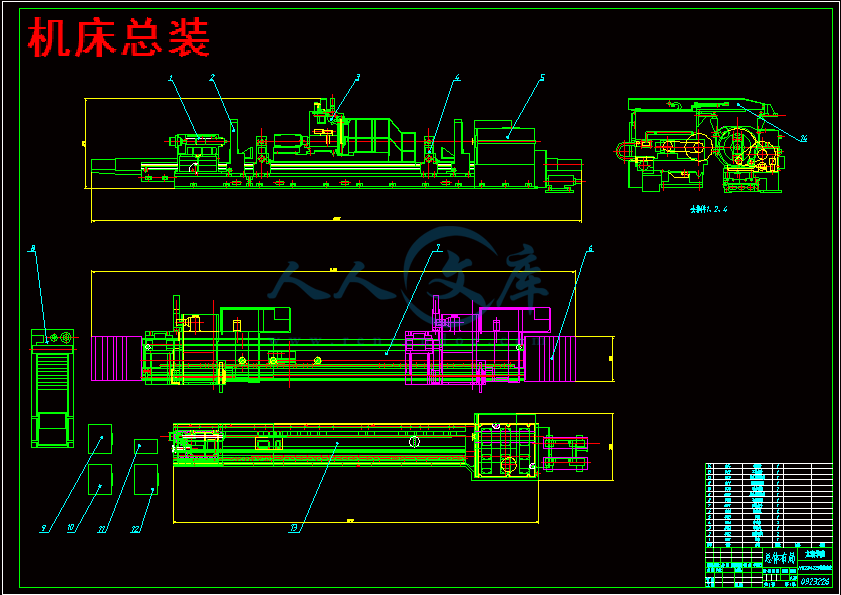
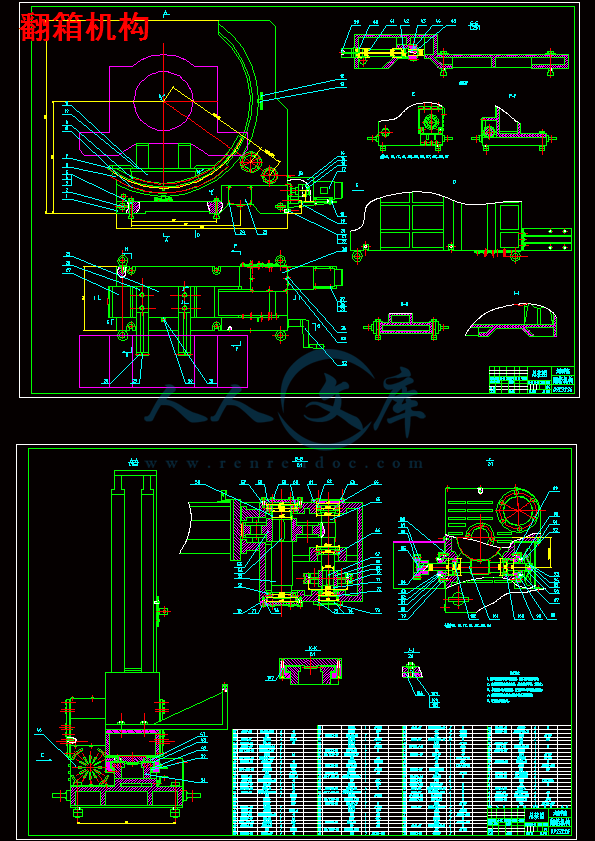
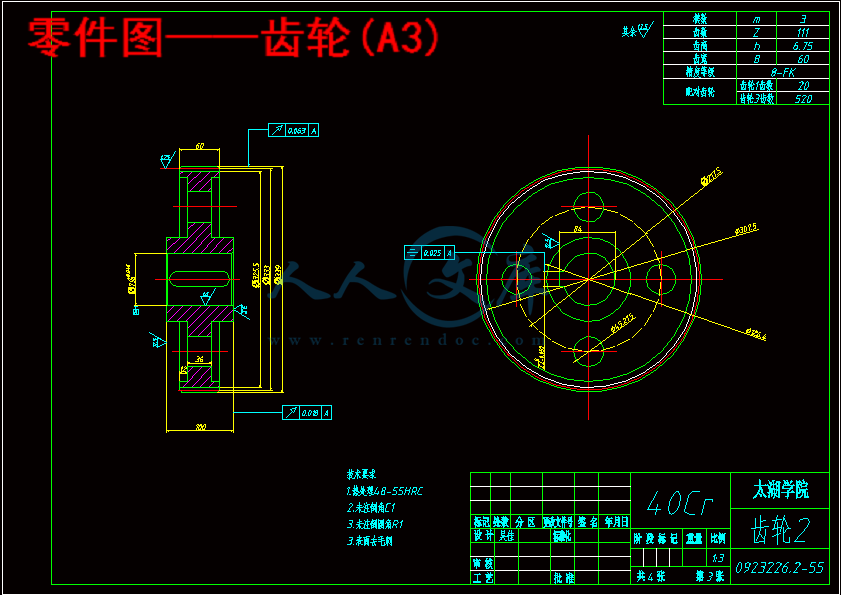
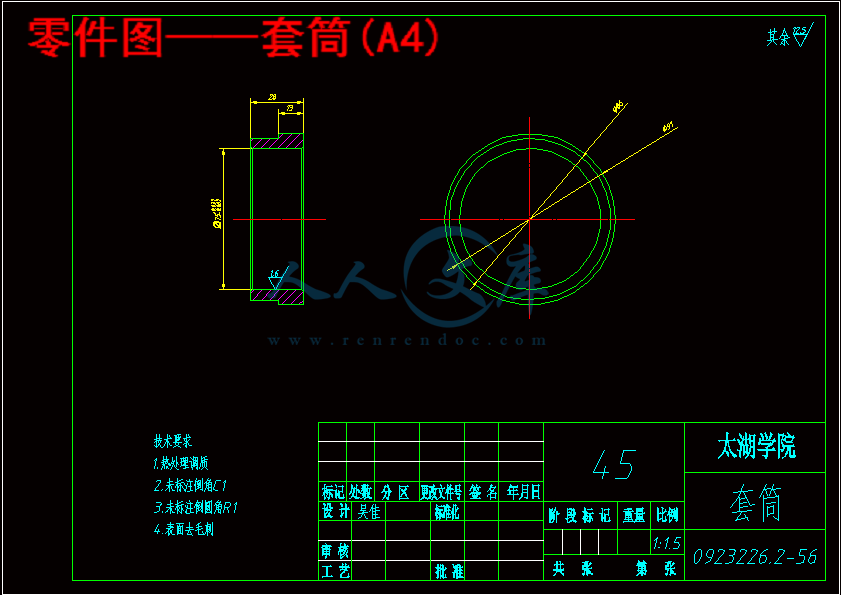
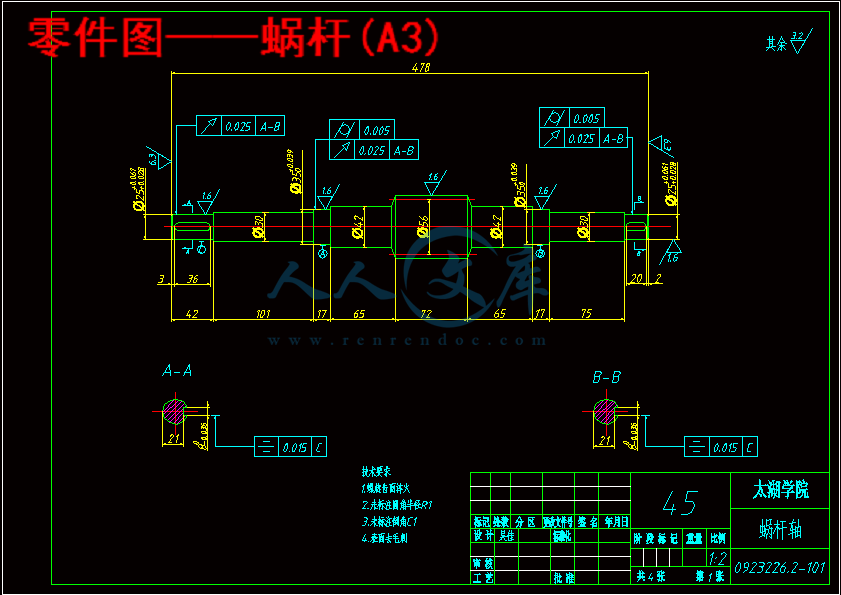


 川公网安备: 51019002004831号
川公网安备: 51019002004831号